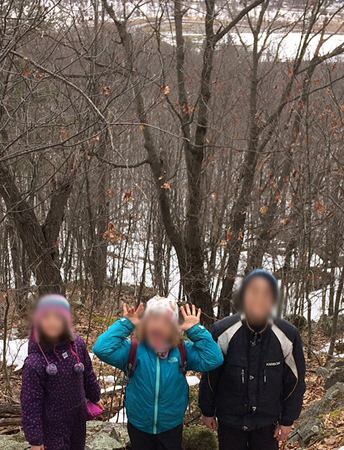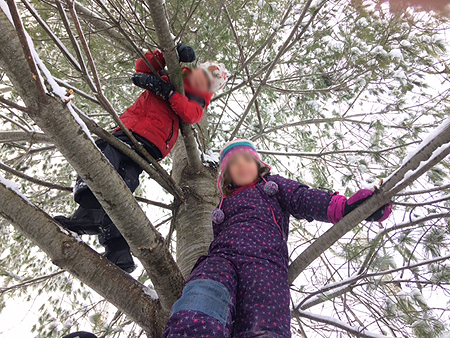“Can we be too safe?” a parent asked me after learning about our day’s adventure.
We had hiked a long looping trail. During snack the children realized we were high on a ridge just above our starting point. They wanted to take the short, steep direct route back to the start.
What came out of my mouth was the uncertainty about the potential dragons in their caves and the possibility of boiling pits of lava.
What was in my head was the steep, & rocky descent with snow, ice and unknown cliffs as well as my unfamiliarity with that part of the forest. Also, I was well aware I was solo with children under 12 years of age.
The students could guess there were likely no dragons and lava. But while discussing the real risks they started to understand the challenges of the unknown descent. I promised I would investigate the steep forest in the week ahead… and we hiked the long, safe way down.
After more solo exploration during the week I was satisfied we could descend safely as a group. The next week we retraced our uphill expedition and discussed how we could descend safely. We were practicing “risky play.”
Different groups need different levels of support to explore safety and risk. But, if asked to analyze risk, people are usually very capable to assess what is safe for them.
We had a good experience. We weighed the risks and found ways to minimize the hazards. The children practiced the valuable skill of testing their perception and reality of safety.
Regulating Risk
I often see or hear of students denied experiences that offer the ability to develop their self-regulating sense of safety. Managed scenarios can help build self preservation, self awareness and a better ability to stay safe in life.
When I teach at Forest School we talk a lot about risk and safety…
“Can we climb that tree?”
“What do you think?…”
We talk about hazards, risks and what is reasonable. Students usually come to a reasonable conclusion with support and guidance. As we explore more, students get better at assessing risk and regulating their own limits:
“Can I go higher?”
“What do you think?”
“I think this is high enough for me…”
Telling vs Learning
A couple of years ago, I picked up my own son from school on our bikes on a cool spring afternoon. I asked him to put on his coat. He told me he didn’t need one. He needed a coat to stay warm. But I said “Ok.” We started riding. He lasted less than a minute before stopping because he was cold. He decided to put on his coat…
Instead of being told he needed his coat, he learned he needed his coat.
Big difference. It’s called experiential education.
Can we, as parents, teachers, educators be too safe?
Hmm. We can teach risk assessment, regulation and safety with careful planning and management of “risky play.”


